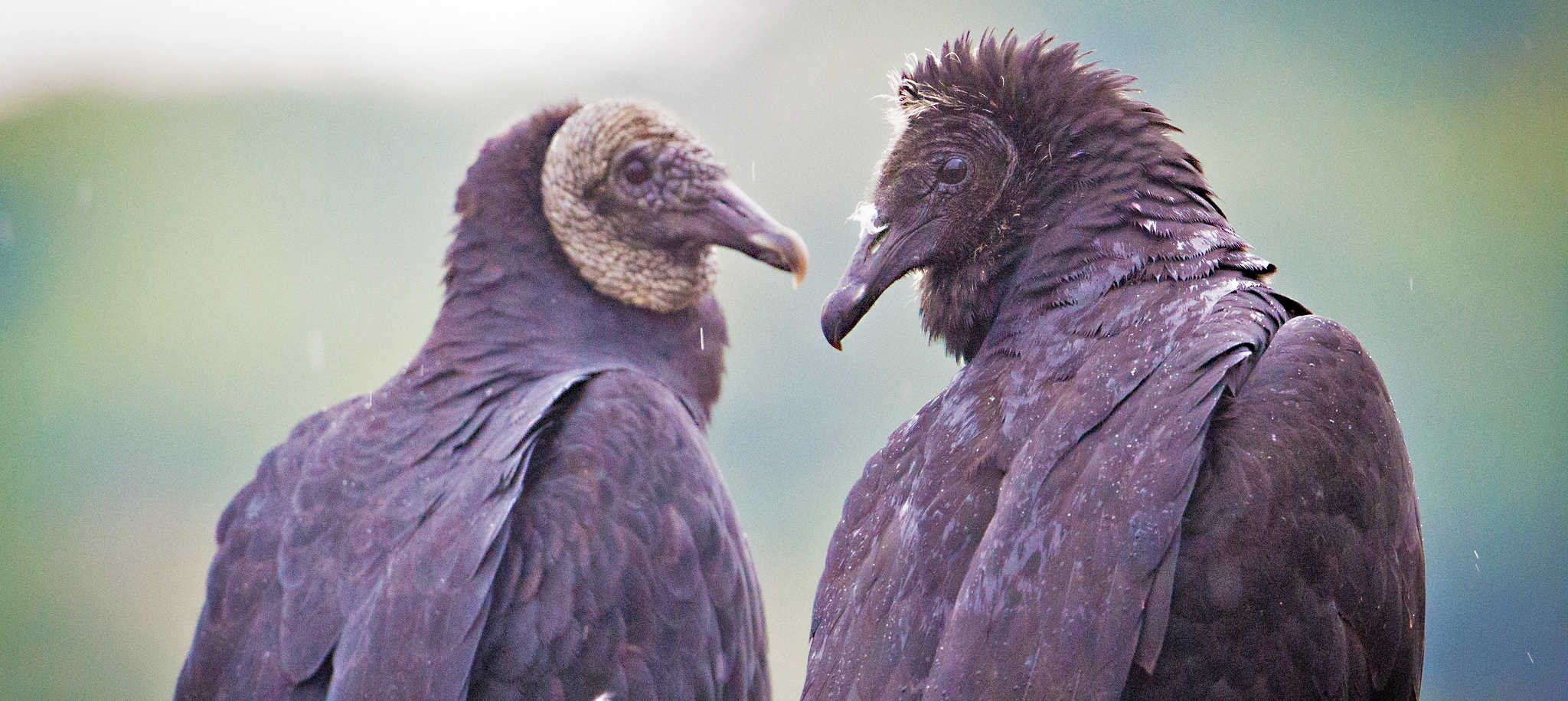Share this article
JWM: Should more lethal take be allowed for black vultures?
For decades, black vulture (Coragyps atratus) numbers have been on the rise in the United States. As their populations have grown and their range has expanded, conflicts with humans have grown, too. While famously scavengers, black vultures sometimes predate on livestock, creating conflicts with ranchers. Their predilection for chewing on vinyl seats hasn’t won them fans among convertible owners, either.
As complaints about black vultures rise with their population numbers, wildlife managers wondered if the allowable take for these birds could be increased while still meeting requirements under the Migratory Bird Treaty Act to sustain the species.
“The goal is to minimize conflict with humans but still not damage the populations,” said TWS member Guthrie Zimmerman, population ecologist for the U.S. Fish and Wildlife Service’s Migratory Bird Program and lead author on a paper on the subject published in the Journal of Wildlife Management.
The team looked at analyses used to estimate allowable take in Virginia and expanded it to cover the vultures’ range throughout the eastern U.S. They found a range of estimated allowable take, down to just a few hundred individuals per year in the northern end of their range. Across the range, they estimated about 287,000 individuals could be taken without harming the population.
“But that doesn’t mean that’s the best strategy of solving the depredation problem in all cases,” said co-author Brian Millsap, national raptor coordinator for the USFWS. “Simply going out and removing vultures doesn’t necessarily solve the problem. Not every vulture is causing problems, and if you remove one vulture, another one may replace it.”
Black vultures are subtropical birds, historically ranging from South America to the U.S. Gulf Coast. Since the 1960s, researchers say, both their numbers and their range have grown, apparently driven by climate change, as well as by growing populations of white-tailed deer that provide carrion. “As winter temperatures warm slightly, it allows these birds to expand their ranges a little farther north,” Millsap said.
In recent years, their range has expanded as far as New England. In Ohio, land managers have heard complaints from ranchers who said the vultures were preying on their calves. Such problems are well known in Florida and other areas black vultures have long occupied, researchers said, but in areas like Ohio where they’re newcomers, ranchers aren’t used to dealing with them.
But increasing lethal take permits may not ease those problems, they wrote. While isolated lethal take permits to eliminate problem birds may help eliminate some conflicts, they said, large-scale lethal control may be ineffective.
“We’ve estimated what we think the population can sustain,” Millsap said, “but the real solution here isn’t just removing vultures.”
Ranchers should also consider nonlethal techniques, such as dispersing communal roosts or harassing vultures, which are often more effective and don’t affect population numbers, he said.
Vultures may not be popular, but they are useful, Zimmerman said. By eating roadkill and other dead animals, he said, they reduce the build-up of carrion. Countries where vultures have been eliminated have seen increases in mammalian predators that can increase incidences of rabies and other conflicts with humans.
“They’re really important scavengers,” he said.
TWS members can log in to read this paper in the Journal of Wildlife Management.
Header Image: Black vultures appear at Hueston Woods State Park in College Corner, Ohio. ©Andrew Cannizzaro








